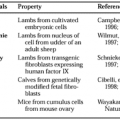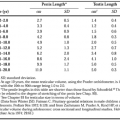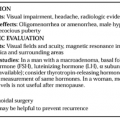DIFFERENTIAL DIAGNOSIS OF HYPERCALCEMIA
Nonparathyroid disorders that may lead to hypercalcemia are listed in Table 59-1. The most common of these is malignancy, which is second in frequency only to primary hyperparathyroidism among ambulatory patients with hypercalcemia and is considerably more common than hyperparathyroidism among hospitalized patients with hypercalcemia.
TABLE 59-1. Nonparathyroid Causes of Hypercalcemia | ||||||||||||||||||||||||||||||||||||||||||||||||||||||||||||||||||||||||||||||||||||||||||||||||||||||
|---|---|---|---|---|---|---|---|---|---|---|---|---|---|---|---|---|---|---|---|---|---|---|---|---|---|---|---|---|---|---|---|---|---|---|---|---|---|---|---|---|---|---|---|---|---|---|---|---|---|---|---|---|---|---|---|---|---|---|---|---|---|---|---|---|---|---|---|---|---|---|---|---|---|---|---|---|---|---|---|---|---|---|---|---|---|---|---|---|---|---|---|---|---|---|---|---|---|---|---|---|---|---|
| ||||||||||||||||||||||||||||||||||||||||||||||||||||||||||||||||||||||||||||||||||||||||||||||||||||||
MALIGNANCY-ASSOCIATED HYPERCALCEMIA
Malignancy-associated hypercalcemia may arise through four general mechanisms: local osteolysis, humoral hypercalcemia of malignancy (HHM), excessive production of 1,25-dihydroxyvitamin D [1,25(OH)2D], and paraneoplastic secretion of parathyroid hormone (PTH).
LOCAL OSTEOLYTIC HYPERCALCEMIA
The first type of hypercalcemia to be well described clinically was that which accompanies multiple myeloma and breast cancer.1 Most cases of lymphoma-induced hypercalcemia probably also belong in this group. This category comprises ˜20% of patients with malignancy-associated hypercalcemia. Typically, affected patients display widespread skeletal tumor involvement as evidenced by radiographs, bone radionuclide scans, bone marrow biopsies, and postmortem examinations (Fig. 59-1). Histologically, the bone marrow space is infiltrated by tumor cells, and bone surfaces are lined by numerous active osteoclasts. Because of this histologic picture, tumor cells within the marrow space are widely believed to secrete local factors that stimulate osteoclastic bone resorption. With this apparent local mechanism in mind, these patients may be referred to as having local osteolytic hypercalcemia (LOH). The nature of the bone-resorbing or osteoclast-activating factors secreted by the tumor cells remains incompletely defined. Several factors have been proposed, including tumor necrosis factor α,2 lymphotoxin,3 interleukin-1,4 PTH-related protein (PTHrP),5,6 and 7 interleukin-6,8 and prostaglandin E29 all of which stimulate osteoclastic bone resorption in in vitro systems. Direct bone resorption of devitalized bone in vitro also has been demonstrated by breast cancer cells.10 Possibly, in some instances, tumors may directly phagocytose bone. Biochemical studies of patients with LOH characteristically reveal increases in fractional calcium excretion, normal or near-normal serum phosphate concentrations and renal phosphate threshold values, decreases in circulating immunoreactive PTH and 1,25(OH)2D concentrations, and reductions in nephrogenous cyclic adenosine monophosphate (cAMP)
excretion11,12 (Fig. 59-2 and Fig. 59-3). Bone resorption markers, such as hydroxyproline cross-links and N-telopeptide, are increased.13
excretion11,12 (Fig. 59-2 and Fig. 59-3). Bone resorption markers, such as hydroxyproline cross-links and N-telopeptide, are increased.13
Stay updated, free articles. Join our Telegram channel

Full access? Get Clinical Tree






